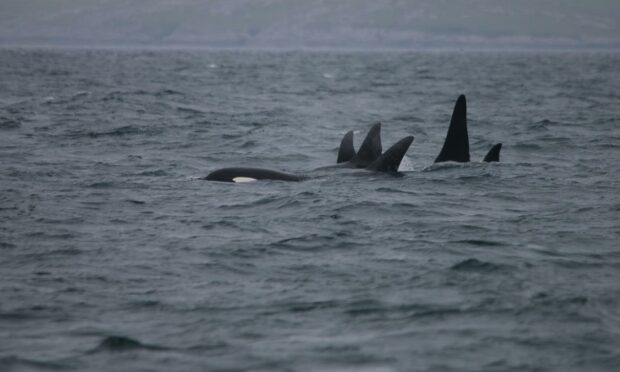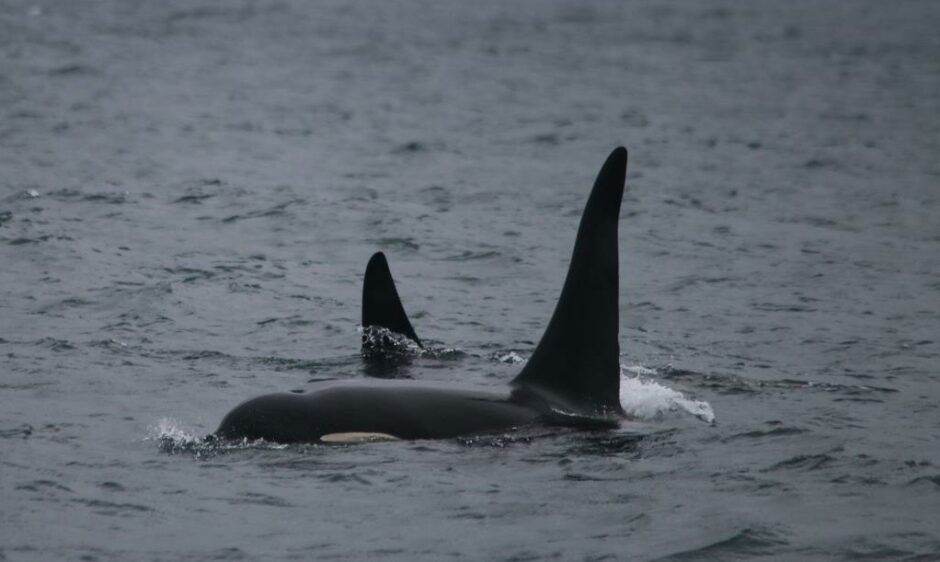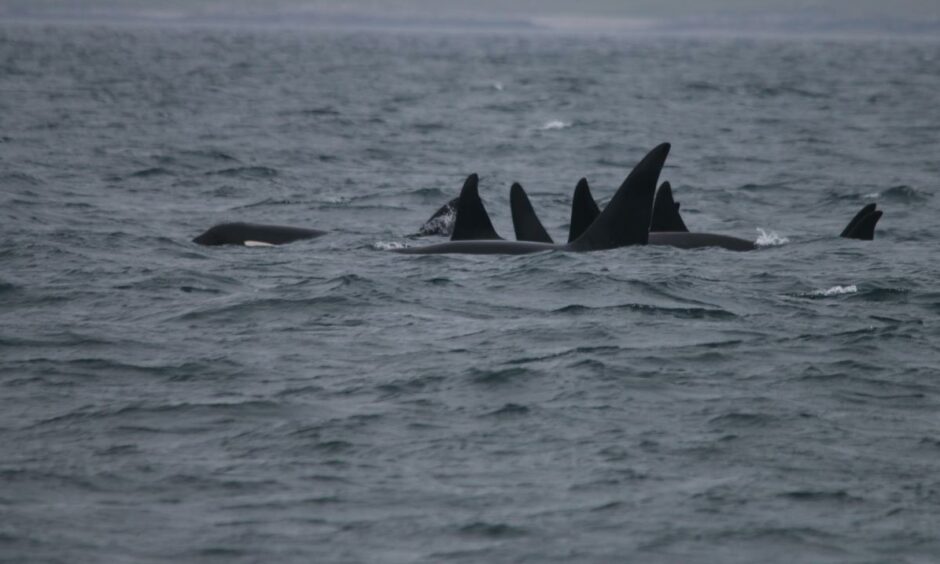A mystery pod of killer whales spotted off Scotland’s west coast three years ago has surfaced again in Norway, in what experts are hailing as a first.
The nine whales caused a stir in 2018 when encountered during a Hebridean Whale and Dolphin Trust’s expedition off Vatersay.
They were spotted just 1,000ft away from the charity’s research yacht, Silurian.
Scientists who study the animals and have recorded numerous sightings did not recognise the individuals and said they had not been seen before in Scottish waters.
Amateur scientist provides the breakthrough
Nor had the whales been seen since.
Despite collaborating with other organisations and experts to identify the animals, the trust said the pod remained an “enigma”.
However, three individuals photographed by an amateur scientist in south Norway this month have now been identified in what is believed to be the first match of killer whales between Scotland and Norway.
The breakthrough came after ‘citizen scientist’ Asmund Aasheim snapped a pod of six whales in Børøyfjorden and sent his pictures to the Norwegian Orca Survey.
Principal investigator Dr Eve Jourdain discovered the killer whales were not familiar from Norwegian records.
As the colouring on the animal’s backs, known as a saddle patch, looked different to that of killer whales normally seen around Norway, Dr Jourdain began comparing the individuals against other national records.
She found a match in the Scottish Killer Whale Catalogue, a research document containing the best available images of all known living killer whales seen in Scottish waters.
First match of killer whales between Scotland and Norway
Dr Jourdain said: “From the moment I first took a look at Asmund’s photos, I knew these killer whales were different from our Norwegian killer whales.
“Following our routine protocols, I tried to identify them from our Norwegian catalogue anyway but, as expected, I found no match.
“When it came to mind that I should browse through the Scottish Catalogue, I had a strong feeling that I would find them there.
“And, bingo! It was incredible to find this first photographic match between Norway and Scotland.”
It highlights how much there is to learn about marine life in our oceans.”
Science officer Becky Dudley
Researchers at the Hebridean Whale and Dolphin Trust and the authors of the Scottish Killer Whale Catalogue subsequently confirmed that three of the killer whales in the Norwegian encounter were specific individuals known from the Scottish Catalogue.
The trust’s science officer Becky Dudley captured pictures of the whales in 2018 which made the Norwegian match possible.
“The encounter with this group of killer whales back in 2018 was one of the most amazing experiences I’ve had on Scotland’s west coast,” she said.
“It was made even more exciting when, despite much investigation and collaboration with other organisations, the identity of this pod remained a mystery.
“I am thrilled that the group has been matched to the group seen in Norway over three years later. It highlights how much there is to learn about the marine life in our oceans.”
Dr Lauren Hartny-Mills, the trust’s science and conservation manager, said the new sighting highlights the importance of citizen science to the monitoring of wide-ranging animals such as whales and dolphins.
“We still have so much to learn about whale movements, and it’s fascinating to be able to add another important piece to the puzzle.
‘We hope to learn more about this group’
“Through working with citizen scientists and by collaborating with colleagues from Scotland, Norway and beyond, we really hope to learn more about this group.”
The Hebridean Whale and Dolphin Trust said photo-identification is a widely used, non-intrusive research method.
It allows researchers to identify individual whales from natural markings or features on their bodies.
Sightings and photographs of whales, dolphins, porpoises and basking sharks off the west coast of Scotland can be reported to the trust.


